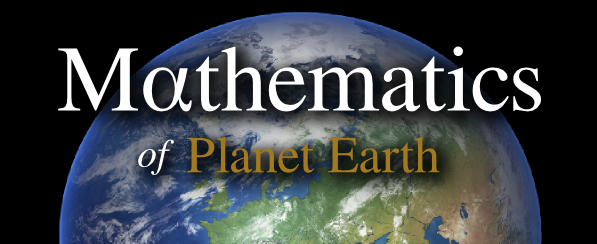Titles and Abstracts
10.00: Dr Oliver Allanson. PDRA. Space and Atmospheric Electricity (Uni. Reading)
Is normal diffusion appropriate in the Earth’s outer radiation belt?
The Earth’s outer radiation belt is a dynamic and spatially extended radiation environment within the Earth’s inner magnetosphere, composed of energetic plasma that is trapped by the Geomagnetic field. Whilst the lifetime of some individual energetic particles can be long (~years), orders of magnitude changes in the particle flux can occur on much shorter timescales (~hours). Whilst we know that the radiation belt environment is ultimately driven by the solar wind and the pre-existing state of the magnetosphere, it is very challenging to accurately predict, or model, fluxes within the radiation belt; a pressing concern given the hundreds of satellites that orbit within this hazardous environment. Most physics-based computer models of particle dynamics in the radiation belts rely upon a specific version of the ‘quasilinear theory’. This approach is founded upon a number of physical assumptions that are now known not to always hold in the radiation belt. Furthermore, the mathematics that is used to describe this quasilinear theory is based upon ‘normal diffusion’ equations, i.e. equations that (in a given space) describe stochastic Brownian motion. This stochastic assumption is also considered to be uncertain in given circumstances. Our work tries to test these assumptions, by processing data from state-of-the-art and fully self-consistent numerical experiments.
10.30: Dr Inna Polichtchouk, Department of Meteorology (ECMWF)
Impact of (mis)representation of stratospheric gravity waves in high-resolution models
Unbalanced dynamics in the stratosphere consists mainly of upward-propagating gravity waves, which exhibit a shallow -5/3 slope in their kinetic energy spectrum. At typical numerical weather prediction (NWP) model resolutions, a large part of the gravity wave spectrum is resolved, at least in the horizontal direction. However, theoretical considerations suggest that in most models vertical to horizontal resolution aspect ratio is inadequate for accurate representation of gravity wave dynamics. This talk explores what consequences poor vertical resolution has in European Centre for Medium Range Weather Forecasts (ECMWF) model. It is shown that operational forecast systems at ECMWF suffer from sensitivity of stratospheric global-mean temperature to resolution: At high horizontal resolution, the dynamical core looses global-mean temperature if the vertical resolution is not concomitantly increased. Mechanism-denial experiments show that the sensitivity arises due to inadequate treatment of semi-Lagrangian vertical advection in the presence of resolved gravity waves. If the vertical resolution is increased, the sensitivity disappears. Other possible solutions to the global-mean cooling problem are discussed.
11.00: Branwell Snelling, PhD student (Imperial)
Using smoothed particle hydrodynamics to investigate sources of uncertainty in landslide generated waves.
Landslide generated waves (LGWs) can be extremely hazardous and it is difficult to predict their location, time, and size. There is likewise a lack of direct observational data of past events, which makes numerical modelling a crucial tool in investigating and attempting to predict future events. We can also use numerical models to quantify sources of uncertainty associated with LGWs, thereby paving the way for probabilistic hazard analysis. Here I use Smooth Particle Hydrodynamics (SPH), which is a meshless Lagrangian numerical modelling technique, to simulate LGWs and investigate the sources of uncertainty associated with them. The rheological parameters of the landslide and its geometry both contribute to uncertainty in the outcome of the model, and would therefore have an impact on a hazard analysis derived from such a model. An effective way to quantify the uncertainty in the model would be to sample the entire input parameter space to determine the complete range of outputs. However, fluid dynamics modelling is computationally demanding, which makes such a sampling method infeasible. To circumvent this I have trained a Gaussian process emulator with a set of my simulation results, and then sampled that emulator in order to quantify the sources of uncertainty. The emulator can also be used to determine which input parameter have the greatest influence on a hazard prediction.
11.30: Giovanni Maria Matrone, PhD Student (Imperial)
Progress over the last few years designing new materials for bulk heterojunction solar cells has been enormous with efficiencies reaching more than 13%. However, a multitude of combinations exist on how to blend donors and acceptors, with a wide variety of processing options, rendering materials selection and testing an intricate task. Indeed, detailed fundamental understanding between phase behaviour and BHJ properties is still lacking, drastically limiting, among many things, device reproducibility and general progress in the field1. Here we present a pathway to predict BHJ microstructure and phase morphology in OPV systems using PCE11 (i.e. PffBT4T-2O): fullerene blends as model systems.
We demonstrate that combining optical probes that allow to assess polymer aggregation2, differential scanning calorimetry to establish temperature/composition diagrams3, vapour phase infiltration using ALD to visualise the phase morphologies with X-ray diffraction to detect crystalline structures (GIWAXS) and polymer/fullerene domain size (GISAXS)4 detailed understanding of relevant processing/structure/property interrelationships can be obtained. Additionally, blade coating with in situ GIWAXS experiments elucidate BHJ microstructure development providing insights on phase separation – relevant deposition parameters relation. These investigation techniques can be applied to other systems, providing an approach to disentangle effects of miscibility, processing and final device performance.






